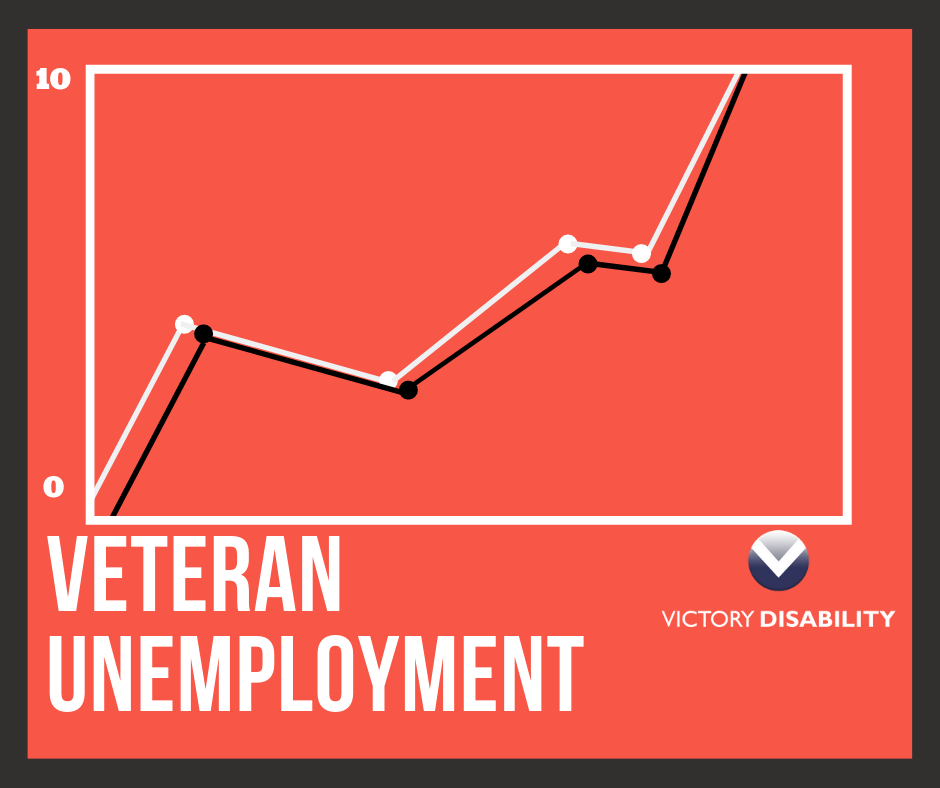
10 Jul 3 Reasons Unemployment Is Higher Among Veterans
There are more than two million nonprofits organizations in the United States. Approximately 45,000 self-identify as serving U.S. military service personnel and their families. Vietnam veterans spent months and years fighting through emotionally, physically, and spiritually arduous circumstances. They returned home hoping for a fresh start, new opportunities, and a chance to put the past behind them. Unfortunately, many of these veterans found the transition very challenging. A significant number of them slipped into the clutches of persistent unemployment. This led to the perception, and some would argue reality, of a generation of disenfranchised and dejected U.S. military veterans. The social ramifications of poverty, homelessness, substance abuse, depression, and suicide continue to affect our country decades later.
The challenges of veteran unemployment are not confined to the Vietnam-era veteran population. One million veterans were projected to leave the armed forces between 2012 and 2017. That said, the United States stands at a critical moment. Will we allow another generation of veterans to return from war only to search for dignified work? Or will this generation of civilians step up to embrace and support returning warriors?
Veteran Unemployment Today
To gain a better understanding of the current state of veteran unemployment, we must analyze the causes of this trend. There are currently more than 22 million living veterans in the United States. About 2.4 million of them are veterans who have served in Iraq and Afghanistan. Between 2012 and 2017, another million veterans are projected to leave the military. After that, begin their quest to enter the civilian workforce. In 2014, there were 21.2 million men and women veterans and 573,000 were unemployed. While the national unemployment rate is 5 percent, the unemployment rate for Gulf War-era veterans is 8.4 percent. 68 percent higher than the national rate, according to the Bureau of Labor Statistics.
There are three distinct factors that most heavily affect unemployment among veterans. These causes include:
- The challenge of translating military work experience into civilian terms
- Certification hurdles including licensing requirements
- Disabilities such as post-traumatic stress disorder
An article in the LA Times offers some examples of this dilemma, “Lisa Rosser, a 22-year Army veteran who runs Value of a Veteran, a consulting firm, said, ‘many veterans didn’t translate their military experience into civilian language even though 81 percent of military jobs have a close civilian equivalent. For example, the military occupational specialty Visual Information Equipment Operator-Maintainer would be, in the civilian world, someone who runs video teleconferencing. ‘Employers don’t understand those resumes,’ said Rosser, whose firm advises employers on hiring veterans. ‘But they have plenty of civilian resumes on hand to choose from, so they tend to go with what they understand.’” By making the extra effort to translate their military resumes into civilian terminology, veterans will increase their chances of employment.
There are several ways to approach this goal. These vary from consulting a friend, to seeking help or review from peers The U.S. Department of Labor has also created a manual for this very purpose. Entitled, “How to Create an Effective Resume,” which is often used at veteran employment workshops.
The Problem With Certifications
The challenge of proper certification frustrates many veterans in search of employment. While some technical fields such as “signals communication” may not directly translate to computer coding in Silicon Valley, many military jobs are almost identical to civilian counterparts. The struggle occurs when a veteran seeks the civilian equivalent of his or her previous military occupation. Then, encounters intimidating, confusing, time-consuming requirements such as certification or coursework.
In addition to these requirements, the manner in which veterans pay for the certifications can also frustrate veterans enough to forgo using their well honed military skills. U.S. Representative Jeff Miller, a Florida Republican and chairman of the House Committee on Veterans’ Affairs, explains that, “Many use federal benefits to pay for civilian schooling in skills they’ve already mastered. We are literally wasting millions of tax dollars requiring someone to attend training they have already completed, which could be spent on more advanced qualification.”
Requirements
For example, a U.S. Army medic is responsible for many of the exact same duties as a civilian paramedic. However, this veteran medic must complete a yearlong civilian course that can cost up to $10,000. An article published by Bloomberg provides insights through the story of Maria Aliftiras, 34, an instructor at Fort Sam who spent 11 years in the Army Reserves before earning her civilian paramedic’s license. “Aliftiras says that half her 1,200 hours of courses and clinical work through San Antonio College repeated what she already knew about physiology, anatomy, and trauma. Advanced cardiac care was ‘the only real challenge,’ she said.”
Similarly, a veteran who drove a million-dollar armored Mine Resistant Ambush Protected (MRAP) vehicle for 12 hours per day in the mountainous and mine-filled roads of Afghanistan must still obtain commercial driver certifications if he or she would like to transfer those driving skills to a civilian truck driving job. While there are some programs that have been started to aid in the transfer of military skills to civilian jobs, the prolonged absence of such assistance has discouraged some veterans because many are not aware that it exists.
Service-related disabilities such as post-traumatic stress disorder (PTSD) can also sometimes have an unspoken negative effect on veterans seeking employment. While employers cannot legally discriminate against veterans with disabilities, some employers hesitate to hire. That is, fearing an inability to assimilate disabled veterans into the workplace environment.
Effects of Veteran Unemployment on Health
The effects of veteran unemployment extend far beyond a lack of income and the risk of poverty. Especially in cases of extended unemployment, a veteran’s health can deteriorate in addition to experiencing financial and emotional decline. The two most prominent health related effects of veteran unemployment include depression and suicide.
Many jobs, and military jobs in particular, provide a strong sense of purpose, pride, achievement, concentration, and responsibility. Many veterans keenly miss this sense of community and belongingness upon leaving the military. “The workplace can be stressful, but especially for the mentally vulnerable, there is no substitute for what jobs offer in the way of structure, support and meaning,” says Peter D. Kramer, a clinical professor of psychiatry at Brown University.
Anxiety & Stress
The anxiety and stress involved in searching for a job can often lead to depression. Especially when people have been unemployed for six months or longer. A study conducted by the Department of Public Health at the University of Otago revealed that being unemployed is associated with a two to threefold increased relative risk of death by suicide when compared with being employed. While the topic of suicide among veterans has been a relevant subject in U.S. newspaper headlines, it’s still shocking to learn that veterans make up 20 percent of all U.S. suicides. Furthermore, veterans between the ages of 17 and 24 are at a much higher risk. Their suicide rates are four times higher than that of other veterans.
Clearly the challenges of veteran unemployment pose a serious risk to the veteran community and broader civilian communities. Only by first understanding the nature, causes and extent of veteran unemployment, and related social hurdles can we develop the strategies and systems required to improve the situation. First start by taking a closer look at three of the most common hurdles to veteran unemployment. That is, communication of credentials, certification gaps, and understanding of military-specific disabilities. After, we can begin to understand the task at hand and imagine creative solutions moving forward.
Source Credit: https://www.classy.org/blog/3-reasons-unemployment-is-higher-among-veterans/


